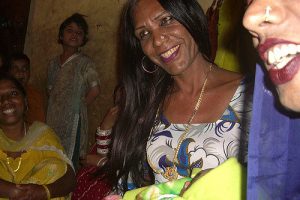
The recent hire of a transgender news anchor in Pakistan garnered strong national and international support. Transgender individuals, commonly referred to as hijra or khawaja sara in South Asia, have long held a place in societies in the region, for Hindus and Muslims alike. Officially defined as a “third gender,” hijra — a non-conforming, trans, or intersex gender identity — in Pakistan now have their own category in the census, the right to vote, and the right to inherit property. Despite these advances, recent sociological findings point out that the hijra community still faces problems of legal recognition, social stigma, marginalization, discrimination, and violence.
Hijra often face familial rejection, lack of opportunities, and human rights violations in Pakistan. Most hijra are born biologically male, but many run away from home due to physical, emotional, or verbal abuse by family members who shame hijra for not performing traditional masculinity. After forming their own communities, hijra may be coerced into dancing, sex work, and begging to make a living. Hijra are also routinely discriminated against and excluded from schools, health services, and government jobs. When police sexually and physically abuse hijra, the legal system often fails to protect or support them. Even in old age, many hijra are cast out of their own communities because they can no longer support themselves.
- Aurangzaib Alizai, Philippe Doneys, and Donna L. Doane. 2017. “Impact of Gender Binarism on Hijras’ Life Course and Their Access to Fundamental Human Rights in Pakistan.” Journal of Homosexuality 64(9): 1214-1240.
At the same time, many hijra resist the man/woman gender binary and navigate society without the confines of traditional gender roles, allowing for some freedom under patriarchal social structures. When excluded from their families, kinship groups, and social networks, hijra create parallel social institutions, relations, and practices that make up new, distinctive communities.
- Amen Jaffer. 2017. “Spiritualising Marginality: Sufi Concepts and the Politics of Identity in Pakistan.” Society and Culture in South Asia 3(2): 175-197.
Even with the implementation of a third gender category, some hijra do not legally adopt the category. Instead, some opt to combine feminine symbols with aspects of masculinity, demonstrating their goal to remain free of any singular legal definition. Given the benefits of being a man in Pakistan — and where a number of familial, religious, and economic difficulties may arise with legally choosing the third gender — hijra often opt to continue to maintain a male legal identity. But the supreme court rulings recognizing hijra indicate that the Pakistani state may in fact be moving away from gender binaries.
- Muhammad Azfar Nisar. 2018. “(Un)Becoming a Man: Legal Consciousness of the Third Gender Category in Pakistan.” Gender and Society 32(1): 59–81.
- Shahnaz Khan. 2016. “What is in a Name? Khwaja Sara, Hijra and Eunuchs in Pakistan.” Indian Journal of Gender Studies 23(2): 218-242.
Though Pakistani laws have formally recognized hijra, this research suggests that social change is necessary for their inclusion in society. It also indicates that hijra communities will likely continue to be resilient and adaptive in a social structure that does not always afford them the benefits of those that identify along the male/female gender binary.

Comments